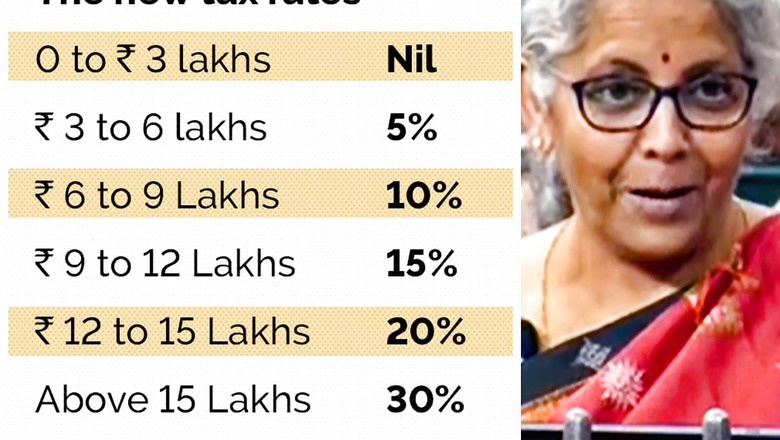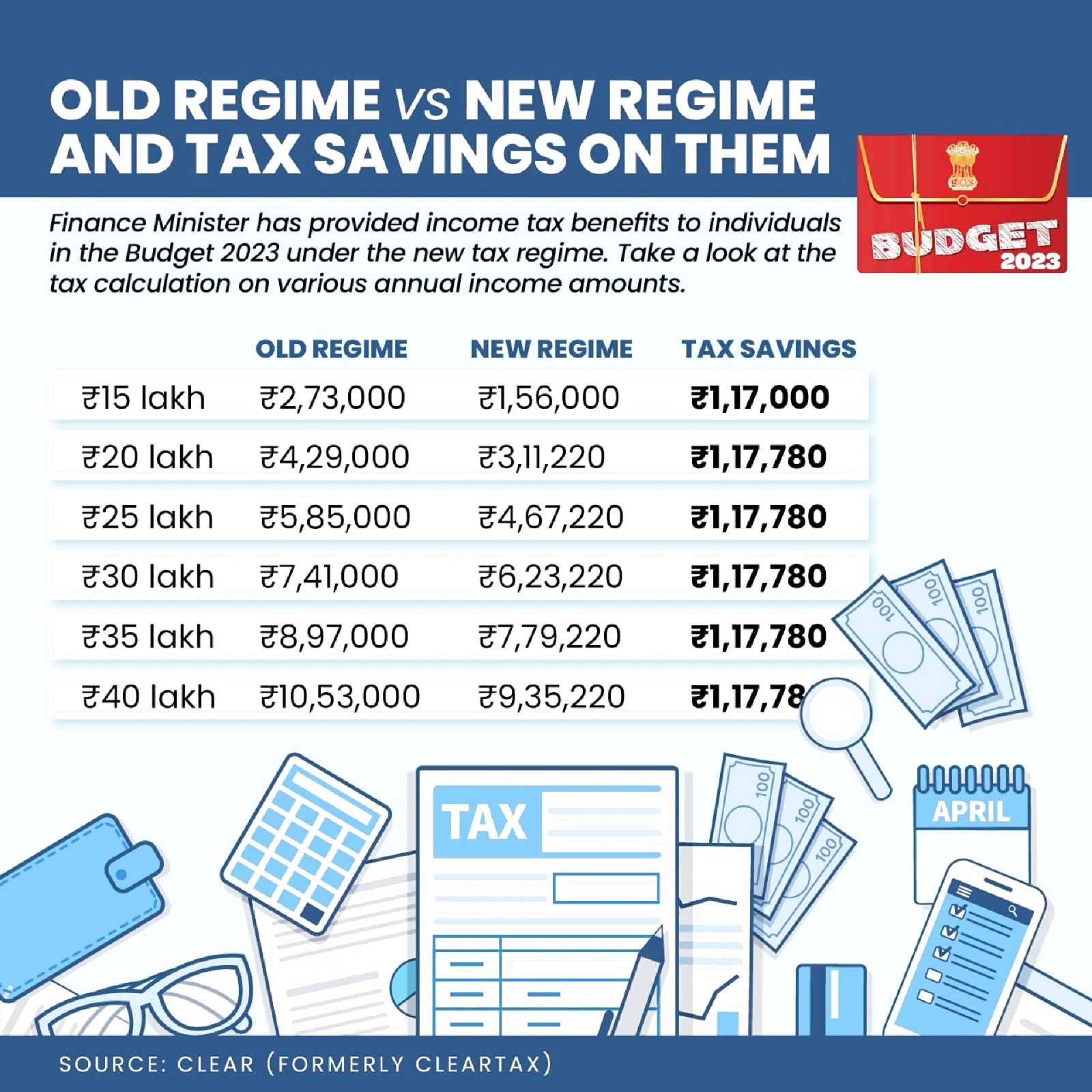
views
Finance Minister Nirmala Sitharaman on Wednesday overhauled the income tax regime and introduced changes in order to provide relief to the “hard-working” middle-class, especially the salaried class, in the Union Budget 2023-24. Here’s the detailed comparison of the existing tax regime and proposed tax regime, and the tax savings in the financial year 2023-24.
Also Read: Income Tax Slabs Overhauled Under New Regime, Rebate Limit Up; Check New Tax Rates
In the Budget 2023, the government has increased the tax exemption limit by Rs 50,000 to Rs 3 lakh, and the rebate has been increased from Rs 5 lakh to Rs 7 lakh. Apart from this, a standard deduction of Rs 50,000, which was available for the old regime, has also been extended to those opting for the new regime. It means that if your income is up to Rs 7 lakh, you dont need to pay any tax.
“..Currently, those with income up to Rs 5 lakh do not pay any income tax in both old and new tax regimes. I propose to increase the rebate limit to Rs 7 lakh in the new tax regime. Thus, persons in the new tax regime, with income up to Rs 7 lakh will not have to pay any tax,” Sitharaman said while presenting the Budget 2023 in Parliament on Wednesday, February 1.
Budget 2023: Old Regime Vs New Regime And Tax Savings

Check the total tax liability on your income under the existing new regime (old regime here) and the proposed new regime.According to a tax estimate sourced from Clear (formerly ClearTax), an income of Rs 15 lakh during 2023-24 will now attract Rs 1,56,000 tax, compared with the tax liability of Rs 2,73,000 earlier. It leaves a total saving of a whopping Rs 1,17,000 in a year. Similarly, those earning a total income of Rs 20 lakh will now need to pay Rs 3,11,220 tax, against Rs 4,29,000 earlier, thus saving a total of Rs 1,17,780.
Those earning up to Rs 7 lakh do need to pay any income tax. However, if the income increase above Rs 7 lakh, it will become taxable. “In case assessee’s income is Rs 7,00,001, then as per the provisions of Section 288A, taxable income will be rounded off to Rs 7,00,000 and accordingly rebate under Section 87A shall be available and tax liability will be NIL. However, if the assessee’s income is Rs 7,00,010, the tax liability would be Rs 26,001,” Maneet Pal Singh, partner at I.P. Pasricha & Co, told news18.com.
Budget 2023: If Your Income Is Just Rs 10 Above Rs 7 Lakh, This is The Tax You’ll Pay
The tax calculations do not include any investment adjustments. However, the calculations include adjustments to standard deductions and 4% higher education cess. Importantly, the standard deduction, which has been extended to the new regime also from April 1, 2023, of Rs 52,500 is allowed to be deducted from gross salary only if it exceeds Rs 15,50,000.
Personal Income Tax Rates Have Changed Under the New Regime
- 0 to Rs 3 lakhs – Nil
- Rs 3 to 6 lakhs – 5%
- Rs 6 to 9 Lakhs – 10%
- Rs 9 to 12 Lakhs – 15%
- Rs 12 to 15 Lakhs – 20%
- Above 15 Lakhs – 30%
The government has also proposed to make the new tax structure as default tax option. Also, the highest surcharge rate from the 37 per cent has been reduced to 25 per cent in the new tax regime. An individual with income of Rs 15 lakh will have to pay Rs 1.5 lakh tax, down from Rs 1.87 lakh under the new tax structure.
Read all the Latest Business News and Budget Live Updates here



















Comments
0 comment